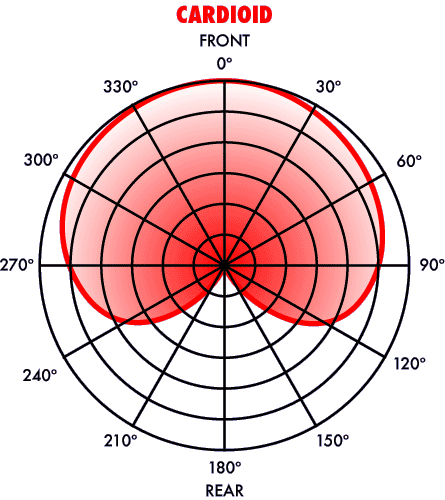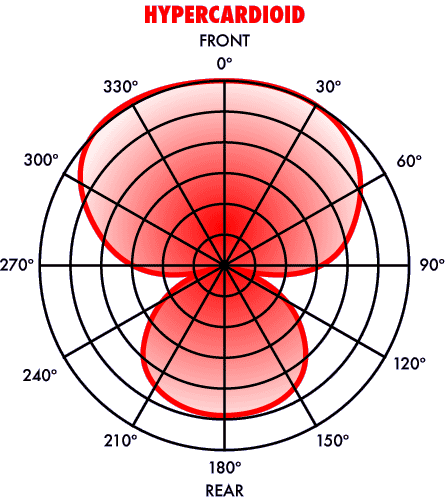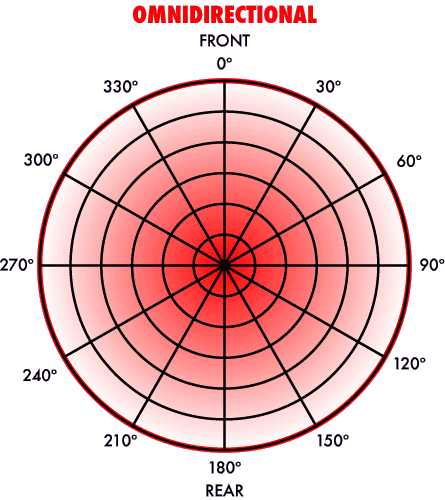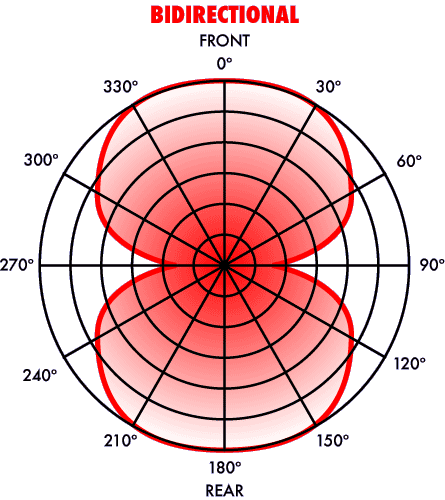In the last post, we began looking at different perspectives on microphones and how they work in order to make knowledgeable choices when selecting a microphone. We began with the fundamentals of audio frequencies and how mics react to them. Today, let’s take a look at another common defining factor for microphones: directional polar patterns.
No need to don a parka and grab maps of distant places! Polar patterns are a method of looking at a microphone’s directionality. Sensitivity to sound waves is important, and so is the direction in which sounds are arriving from. This is important because our environment is filled with sounds emanating from many directions, and often we desire to capture a particular sound or set of sounds available.
Mics fall into three directional categories: omindirectional, cardioid and bidirectional. Cardioid mics could be called “directional”, yet we’ll see in a moment why the name is cardioid. The other names are pretty self-explanatory. Let’s start with omnidirectional (omni for short) microphones.
As the name infers, omnidirectional mics are equally sensitive to audio waves coming from all directions. This means that omni mics pick up all the sounds in an environment in equal amounts, based on proximity to the mic. Although omni mics are not preferred in a lot of situations, they are very handy for many purposes. If you want to record a group of people from a single mic, or to record outdoor ambiance, omnis are ideal for the job. They also tend to be less sensitive to air moving across the sensor, such as wind or breath. Your smart phone is probably using an omnidirectional mic for this reason.
The diagram at the right is a polar pattern that describes the response of an omnidirectional mic when looking at it from a point of view that is perpendicular to the mic’s direction, it’s like observing the Earth from above the North Pole – thus, polar patterns. Front and rear are determined by the manufacturer – don’t let the capsule direction fool you… the front of some mics is not based on the microphone shape.
Cardioid Microphones
 As mentioned earlier, cardiod mics are directional mics. Point the front of the microphone in a particular direction, and it is more sensitive to sounds emanating from that direction. This type of capability is preferred in many recording situations, as it is desirable to isolate sound-producing objects in order to help them stand out to the listener and to provide more control when mixing several recordings together.
As mentioned earlier, cardiod mics are directional mics. Point the front of the microphone in a particular direction, and it is more sensitive to sounds emanating from that direction. This type of capability is preferred in many recording situations, as it is desirable to isolate sound-producing objects in order to help them stand out to the listener and to provide more control when mixing several recordings together.
Here’s the shape of a standard cardioid polar pattern. Notice the heart-like shape (upside down) – thus the name cardioid. These are the most popular mics in professional recording because directionality is so important in most situations. They are very sensitive at the front of the mic, so they will pick up sounds from that direction best. As we move to either side, the mic becomes gradually less sensitive until full rejection occurs at the rear. Cardiod mics work great for general directionality, especially when the source is relatively close to the mic. One issue to note is that cardioid mics are sensitive to the sides and will capture sounds from those directions as well, just at a lower volume.
Hypercardioid and Supercardioid Microphones
 Due to the fact that cardioids are somewhat directional, engineers figured out ways to make microphones even more directional. We call these hypercardioid and supercardioid mics. Like cardioid mics, they are directional, only more focused.
Due to the fact that cardioids are somewhat directional, engineers figured out ways to make microphones even more directional. We call these hypercardioid and supercardioid mics. Like cardioid mics, they are directional, only more focused.
Note that something happens as the directionality of a microphone is tightened more toward the front. As more side rejection occurs, hypercardioid and supercardioid mics become sensitive to the rear. This is more accentuated with supercardioids, also known as shotgun mics. The more focused front sensitivity comes in very handy when recording sounds at a distance. They are quite popular in film and video production, as it’s possible to capture individuals in a noisy environment. Just make sure there isn’t a noise source directly to the rear.
When one tweaks the directionality of a mic far enough, the front and rear sensitivity become equal to each other, creating a bidirectional mic. There aren’t as many common uses for bidirectional mics as other polar pattern types, yet they are excellent in any situation where there are two sound sources and one mic. A radio interview or two people singing harmony come to mind…
Often microphones are capable of switching from one directional pattern to another. The vocal mic I use in my studio switches between omni, cardioid and bidirectional – pretty handy!
Frequency Sensitivity
Hey! I thought we’d already covered this! Yes, however, frequency sensitivity is in play with directionality. Typical frequency response graphs are generated from the front of a mic. Different frequencies roll off at different rates as you move around a directional mic. As a general rule of thumb, low frequencies travel around corners more easily, therefore the sounds arriving from the sides will contain fewer high frequencies and sound “muddier”. High end microphone manufacturers often provide polar patterns for different frequency ranges to provide more information.
We have learned that we can define the quality of a microphone based on its sensitivity to different sound wave frequencies and based on its directionality. There is one more method commonly used to define mics – their design, or the type of technology they use to capture sound. We’ll look at mic designs in the next installment of Mike’s Media Production Tips!



